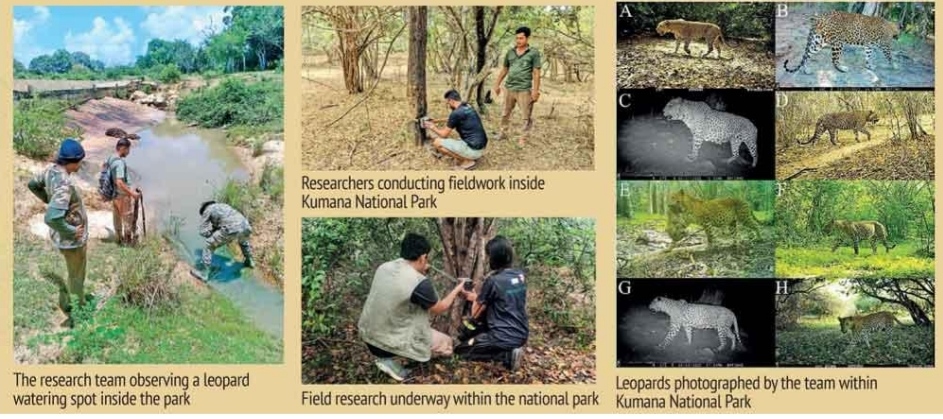Kumana National Park : A haven for leopards

By Nayanajeewa Bandara
Kumana National Park is known to be home to the world’s second-largest population of leopards

According to stats from the Committee of Experts on Feline Species of the IUCN, the population of leopards in Sri Lanka stands at 700 to 950, with 650 of them living in National Parks and 150 in other jungle areas
Kumana National Park is well known for being a bird watching spot, but it is home to many leopards as well
Kumana National Park is known to be home to the world’s second-largest population of leopards (Panthera pardus kotiya) A recent survey carried out by a team of wildlife researchers of the Zoological Studies Department at Sri Jayawardenapura University has confirmed that 41 leopards live per 100 square kilometres in the Kumana National Park.
The survey has revealed that the Kumana National Park, bounded by the eastern sea belt, is the abode of the second-largest population of leopards when compared to the other national parks in the world.

Earlier, the Yala National Park was declared the home ground for the largest population of leopards in the world. The density of leopards at the Yala National Park is 54 leopards per 100 square kilometres.
Globally, a high population of leopards has been reported from India, Russia and Indonesia. Malaysia, Nepal, Thailand, and Bangladesh are other countries with a high density of leopards.
The Research
Dr. Dulan Jayasekara of the Zoological Studies Department of Sri Jayawardenepura University said the leopard is the largest feline species in Sri Lanka, and it is a subspecies of tigers in the world endemic to Sri Lanka.
“The Sri Lankan leopard belongs to a species facing a serious threat of extinction as categorised by the IUCN Red List of Threatened Species.
It lives in the dry zone forests with an annual rainfall of less than 1000 mm and in the wet zone with a high rainfall of more than 2000 mm per year.
The present population of leopards in Sri Lanka is less than 1000. Sri Lankan leopard has been identified as a keystone species and has been conserved as a flag species or umbrella species.”
Researchers said that tourists interested in watching leopards should visit Yala or Wilpattu national parks. However, they are hopeful that their research findings will divert tourists towards the Kumana National Park as well.
A member of the research team, Pasindu Rodrigo, pointed out that Kumana National Park is famous for bird watching, but it is home to many leopards as well.
“Keeping this in mind, we focused our attention on the Kumana National Park. Research on leopards at the National Park had not yet been carried out,” he added.
This National Park spans an area of 357 square kilometres, and only an area of 115 sq. kilometres is open to tourists.
Our research was based on the area open to tourists. We studied the Data collected from 32 locations frequented by leopards and used ten cameras for this purpose,” Rodrigo said.
“The research continued for about two years since 2022. Our study covered the rate of population increase of leopards and their active life span. Our survey revealed that the Kumana National Park was an ideal abode and breeding ground for leopards.
They frequent the lagoons, lakes, hills and boulders for easy preying. We are hopeful that the findings of our research will be useful for the tourism industry and conservationists as well,” he further said.
According to the statistics of the Committee of Experts on Feline Species of the IUCN, the present population of leopards in Sri Lanka is between 700 – 950.
About 650 of them live in national parks or in forest reserves, and about 150 in other jungle areas. The IUCN pointed out that leopards are facing a serious threat due to human activities such as poaching for body parts.
It has been pointed out that the destruction of forests has a serious impact on the survival of leopards.
Daily Mirror




